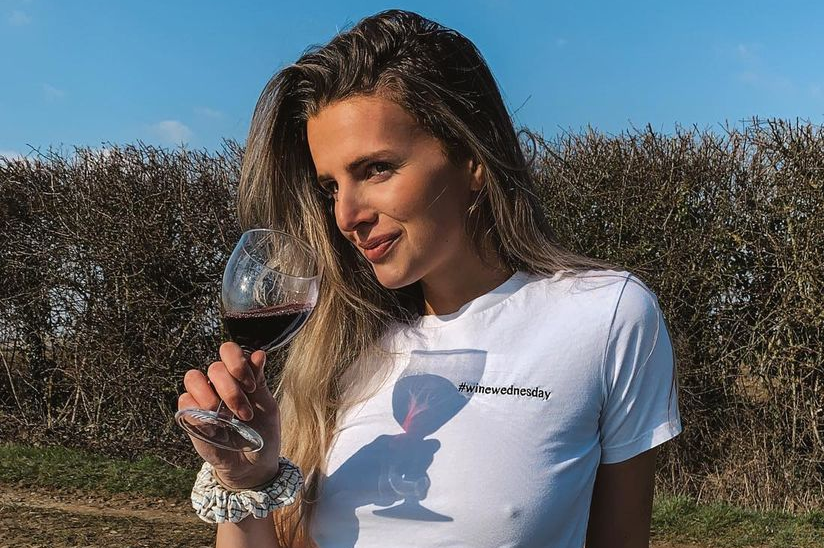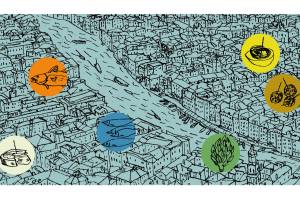The first time I saw the Instagram feed of Georgie Fenn I thought she was a model stooge. Utterly gorgeous, Fenn regularly poses in carefully picked diaphanous clothing, ‘nipple poke’ a specialty. Paid brand collaborations offer excellent returns. Her artfully shot images tagged with maxims as trite as ‘It doesn’t matter what you’re drinking as long as you’re enjoying it’ are a marketeer’s wet dream.
Miss Fenn is an up-and-coming ‘vinfluencer’ — that is, she uses her considerable social media presence (31k and rising @winingawaytheweekend) to sell wine. On Instagram you can also find Madeline Puckette, a graphic designer from Oregon who runs Wine Folly (343k followers), and the Greek chemical engineer Georgia Panagopoulou’s Wine Gini (110k followers), as well as many others. None, however, is quite as flagrantly sexual as Miss Fenn.
This is the way the world is going. Influencing is slowly replacing advertising as the best way to sell stuff from clothes to cars to kitchens. You can’t drink wine through Instagram, but you can see it, and image can be infinitely more important than taste when it comes to sales. There’s no point denying that the visual aspect of wine matters — color, the shape of the glass, the accompanying food, even the background scenery. But turning wine into a soft-porn shoot should be a major turnoff. The wine trade, my trade, needs to engage with younger drinkers. But my lip curls involuntarily at pouting influencers.
When I want wine recommendations, I go for integrity. I value the opinion of wine writers because I have learned to trust their taste. Overly staged sex appeal should arouse suspicion. If you have to try that hard, there must be something wrong. Online, I’m more drawn to the mere mortals who parody their fleshy failings in buffoonery. I’m attracted to the oddballs who feature their crap homemade bread and snot-stained children. These people feel authentic and elicit my recognition.
To be an influencer you require a congregation, the larger the better. Instagram pods offer a fast and facile way of getting one. One of the techniques used by wannabe influencers is forming a ‘pod’. You get together with a group of users and ratchet up each other’s engagement by commenting on and liking every post made by fellow members. This fake-it-till-you-make-it pyramid scheme of popularity can be highly effective. If our peers like something, we are drawn to jump in. The pod is a street-smart weapon that allows a rapid rise through the ranks, regard-less of actual expertise. Likes and comments are timed to dupe the content-curation algorithms on Instagram into thinking you are insanely interesting and popular; this serves to amplify your reach further by pushing you up the engagement pecking order. You can spot a pod a mile off with a self-tutored eye. Look for mindless comments and suck-up shares, which feel impersonal and fake.
So much for authenticity. The whole concept of social media is based on image projection. Pods feel grossly corrupt but the influencers that emerge attract marketing spend. They can personify a brand or signal desirable lifestyles to the aspirational — all those things that marketing people cherish. Willowy, muslined blondes offering up pale rosé from the South of France, or tanned, ripped princelings in an Aston touting an aristocratic Malbec, are enticing and delicious. Especially when the blondes want to be your most special friend.
Once gained, influencer status affords lofty leverage. It presents a ticket to ride the coattails of seasoned wine professionals, to be flown around the world and taste fine wines in the hope of providing some coverage. You might be a Master Sommelier or the author of several authoritative tomes but you are only part-baked without a prodigious following of eager acolytes. You may, after 30 years at Berry Bros and Rudd, the royal family’s local shop, find yourself occupying the same stage as a twenty something marketeer who is smart enough to work the system but knows bugger all about Burgundy. Does it really matter if they bring the buyers in?
Well, yes, because influencing on image alone cheapens everything in the end. The title ‘Master of Wine’ (MW) is a lofty accolade, earned through passing rigorous exams. All 408 MWs have signed up to a code of the highest professional and personal conduct. But even MWs can be seduced by the filthy lucre of likes.
An eminent Master of Wine with whom I’ve worked followed a more lowly wine-competition judge on Instagram. This judge felt elated, chosen even and duly followed him back. Hours later, his impressive new friend was gone. ‘Follow, unfollow’ is a technique some people use to build their followings. They love you and then they leave you, just after you’ve loved them back.
Some vinfluencers even buy followers. This is easy to spot and a little desperate. The wine trade is full of wealthy chancers: rich dilettantes used to getting what they want when they want it. Buying followers offers a fast route to surface popularity for new users but is shallow. Someone who buys their friends is surely not a reliable judge of wine.
The future seam of marketeers’ gold is perhaps not to be found in the large followings of vinfluencers but in small-niche users who offer an authenticity that’s hard to fake. Pods and back-scratching will grow a brand but ultimately these profiles are self-serving and empty. Niche nerds are still out there. In its cursory engagements, Instagram may offer a more genuine perspective. I might follow a winemaker I once met in the Southern hemisphere without being perceived as a bunny-boiler. Over months I gain insight and engage further if so inclined, an elegant dance of manners and reciprocation. Or I may be faced with a post of an oiled, well-lit, be tatted torso clutching a bottle of Armand de Brignac Ace of Spades, splayed across a 10-berth jacuzzi. In which case I can press mute and move swiftly on.
This article was originally published in The Spectator’s April 2021 US edition.


















